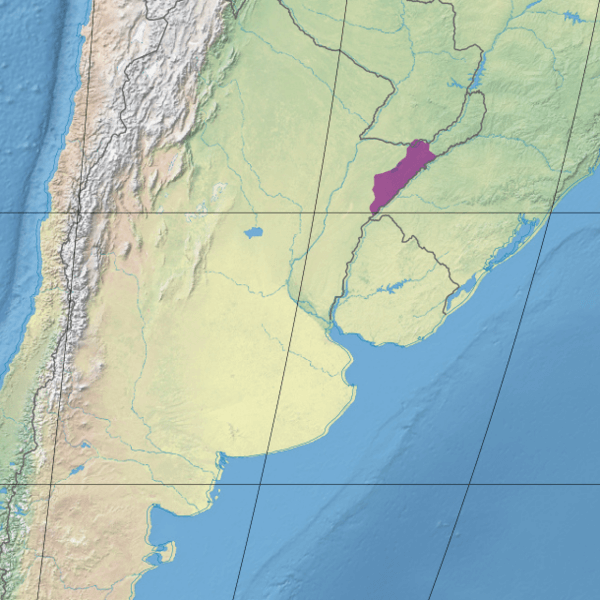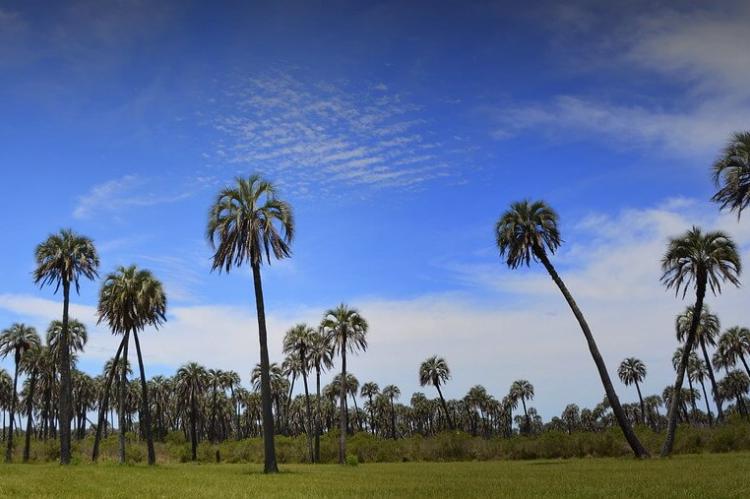The Southern Cone Mesopotamian Savanna: Argentina's Flooded Biodiversity Haven
The Southern Cone Mesopotamian savanna is located in northeastern Argentina. It combines woodland and grassland, with trees widely spaced apart, allowing for a continuous layer of herbs. Despite its ecological significance, it is one of the least protected ecoregions in Argentina.
The Southern Cone Mesopotamian Savanna
Argentina's Flooded Biodiversity Haven
The Southern Cone Mesopotamian savanna, also known as the Argentine Mesopotamian grasslands, is a beautiful example of the diverse ecology found in northeastern Argentina. This ecosystem is characterized by a mix of woodland and grassland, with widely spaced trees that allow for a continuous herbaceous layer.
However, despite its ecological importance, the Southern Cone Mesopotamian savanna is one of the least protected ecoregions in Argentina. Only 0.11% of its total area is currently under conservation efforts. Within this unique ecosystem, various plants, including Prosopis (a bean relative), create a vibrant tapestry of life. Additionally, the flooded grasslands are home to a diverse range of wildlife.
Geographical and Ecological Characteristics
The Southern Cone Mesopotamian savanna is a vast ecoregion that covers northeastern Argentina. It consists of flooded grasslands, woodlands, and herbaceous plains and is located within the Mesopotamia region. The ecoregion primarily spans parts of Entre Ríos and Corrientes provinces, situated at the heart of the country. The seasonal flooding of surrounding rivers shapes the region's unique blend of terrestrial and aquatic ecosystems. The ecoregion is primarily flat, with occasional hills and low-lying areas prone to flooding during high water levels.
One of the most distinctive features of the Southern Cone Mesopotamian savanna is its vegetation. The landscape is dotted with widely spaced trees, including species like the bean relative Prosopis, which thrive in the nutrient-rich soils of the region. These trees are essential to the ecoregion's ecosystem, providing habitat and food sources for a wide variety of wildlife species while contributing to the overall biodiversity of the area. Beneath the canopy of trees, the ground is covered by an unbroken herbaceous layer of diverse grasses, sedges, and other herbaceous plants that grow well in the fertile floodplain soils.
Seasonal flooding is a defining ecological process in the Southern Cone Mesopotamian savanna. Periodic inundation replenishes soil nutrients, sustains habitat diversity, and promotes seed germination, driving the environmental productivity of the region. During the wet season, vast expanses of grasslands become shimmering lakes and wetlands, attracting many migratory birds, waterfowl, and aquatic species. However, the cyclical nature of flooding poses challenges for both human communities and wildlife, as it can lead to habitat destruction, displacement of species, and disruptions to local ecosystems.
Biodiversity Haven
The Southern Cone Mesopotamian savanna is well known for its abundant and diverse plant and animal life uniquely adapted to its flooded grassland habitat. The region boasts a wide variety of plant species, ranging from aquatic vegetation such as water lilies and marsh grasses to terrestrial species like palm trees and ferns. A notable species is the Prosopis, a type of bean plant that is a keystone species due to its sprawling canopies and nitrogen-fixing capabilities, providing essential resources for wildlife and ecosystem health.
The Southern Cone Mesopotamian savanna is also home to diverse wildlife, including numerous mammals, birds, reptiles, and amphibians. Some iconic mammalian species in this region are capybaras, marsh deer, and giant anteaters that roam the grasslands. Various bird species, such as herons, ibises, and kingfishers, also inhabit the region's wetlands and waterways. Reptiles like caimans, anacondas, and amphibians, such as frogs and toads, are common inhabitants of the ecoregion's aquatic habitats.
Conservation Challenges
The Southern Cone Mesopotamian savanna is a vital ecological region, but it faces multiple conservation challenges that put its long-term survival in danger. Unfortunately, the area is not well-protected in Argentina, with most of its habitat remaining vulnerable to habitat destruction, land conversion, and unsustainable resource extraction. Human activities like agriculture, urbanization, and infrastructure development are significant threats to the ecoregion, causing habitat fragmentation, biodiversity loss, and degradation of ecosystem services.
Moreover, the Southern Cone Mesopotamian savanna is particularly vulnerable to the impacts of climate change, such as altered precipitation patterns, increased frequency of extreme weather events, and rising temperatures. These climate shifts worsen existing conservation challenges, adding to the stress on fragile ecosystems and species populations. The ecoregion is also affected by invasive species, pollution, and overexploitation of natural resources. These factors compound the threats to the region, meaning that urgent action is necessary to address these pressing issues.
Conservation Strategies
Conservation efforts in the Southern Cone Mesopotamian savanna require a multifaceted approach integrating scientific research, community engagement, and policy interventions. Increasing protected area coverage and establishing conservation corridors to safeguard critical habitats and promote connectivity between fragmented ecosystems is essential. Sustainable land management practices, such as agroforestry, rotational grazing, and wetland restoration, can also help mitigate the negative impacts of human activities on the ecoregion's biodiversity and ecosystem services.
Fostering a culture of conservation and promoting sustainable lifestyles among local communities can be achieved through public awareness campaigns and educational initiatives. Collaborative conservation efforts involving stakeholders, including indigenous peoples, landowners, government agencies, and non-governmental organizations, are vital for ensuring the long-term success of conservation initiatives in the Southern Cone Mesopotamian savanna. By promoting partnerships and stewardship of natural resources, we can work together to protect this invaluable ecosystem for future generations.
Conclusion
The Southern Cone Mesopotamian savanna ecoregion is an essential and irreplaceable ecosystem in Argentina, renowned for its unique flooded grasslands, diverse wildlife, and ecological significance. Despite facing numerous threats like habitat loss, fragmentation, and climate change, we are confident this invaluable ecosystem can be protected and preserved.
Collaborative conservation efforts, rigorous scientific research, and sustainable land management practices can all work together to ensure the continued thriving of the Southern Cone Mesopotamian savanna for generations to come. By recognizing the ecological value of this exceptional landscape and taking assertive steps to address its conservation challenges, we can ensure that it remains a vital sanctuary of life amidst the northeastern plains of Argentina.

Map depicting the Southern Cone Mesopotamian savanna (in purple).
